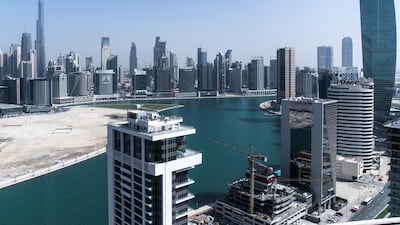This Saturday (January 4) marks the 10th anniversary of Burj Khalifa: it remains the tallest building in the world, which seems remarkable given the pace of change we’ve witnessed in the past decade.
What I also find striking is the city that has fanned out from the pinnacle.
In 2008, I took a British friend to the Palace Downtown: the then-new hotel was marooned in the middle of construction and dust. Downtown Dubai was, at that point, mostly plans, renderings and models.
"Well this is a disaster," he scoffed. "It will never work." I was too reticent to say this at the time, but the subtext of his comment, to me, was "West is best".
Now, Downtown Dubai has an opera house, a free-to-visit park, the world’s tallest fountain (which is free to watch), one of the globe’s biggest malls, a metro that services those commuting – with a covered walkway so that it’s still usable in summer – public art and more restaurants than most know what to do with.
This year, Burj Khalifa was named the 16th most Instagrammed location in the world. Four spots higher than the Empire State Building, it was the only top 20 location not in the Americas or Europe.
So, on the Downtown Dubai front, at least, my opinionated friend was wrong – it worked. This same friend has never stepped foot in Dubai again. And yet I've heard him, over the years, tell people about his weekend-long impression as if it's entirely definitive. Despite what he and travel writers who visit for 24 hours will tell you, Dubai is not all malls and big buildings. The official population when the Burj topped out in 2010 was 1.9 million – it's now around 3.3 million.
All of these people, whether from Pakistan, Brazil, Nigeria, Syria or China, have carved out their own spaces in the city, and it is a better place for it.
I’ve noticed the city change in ways that other people won’t have, and vice versa, because ultimately, your experience of a place is entirely subjective and unique to you.
Ten years ago, I remember that More Cafe and Lime Tree were the only options for a western-style breakfast, and how Chi at The Lodge was the only nightclub. It was a time when no shops opened before 2pm on a Friday, and people used to dangerously dart across highways before the metro and the overpass made safe passage easier. I remember when free running tracks and cycle lanes were few and far between, and when the game-changing term "people of determination" didn't exist, and the determined didn't hold as proud a place in society.
These memories will only resonate with some, because we consume just tiny portions of the cities we live in.
The skyline in 2009 (left) and 2019 (right):
Ten years ago, I lived near Safa Park, when it was bigger, and the Union Coop, Eat & Drink and Reef Bakery on Al Wasl Road were surrounded by very little (now there are under- and over-passes flying around them, and many more developments next to them). But I'm not going to wax lyrical about Dubai in the "old days" like some do, because, well, a decade ago is not the "old days" and also that would ignore the fact that so much of the change has made life better for those 3.3 million people.
Yes, the development had its issues, but am I glad there are now affordable suburbs where those on lower incomes can find nice, family-suitable apartments, in areas that are well connected to public transport? Yes.
Am I pleased that women can now sponsor their husbands for visas to live here? Yes.
Am I happy with the new laws that mean lower income workers can more easily sponsor their families to live here? Yes.
Am I glad that the wage protection system has been bolstered to better monitor whether employers pay their workers on time? Yes (and I hope it means the problem continues to dissipate and cowboy companies have their comeuppance).
Am I happy that 2016’s medical liability law made sex correction surgery legal? Yes.
Am I pleased to see that the new insolvency law will protect those who are indebted against legal prosecution? Yes.
Sure, glistening towers and new suburbs are impressive, but it's laws like these continuing to be developed that will negate the naysayers and help Dubai's population to continue to grow. Legal development has a way to go, but, guess what, every country takes its sweet time on this front.
Unlike the Burj Khalifa, social and legal change here hasn’t topped out, but I’m glad to see that it continues to build.


